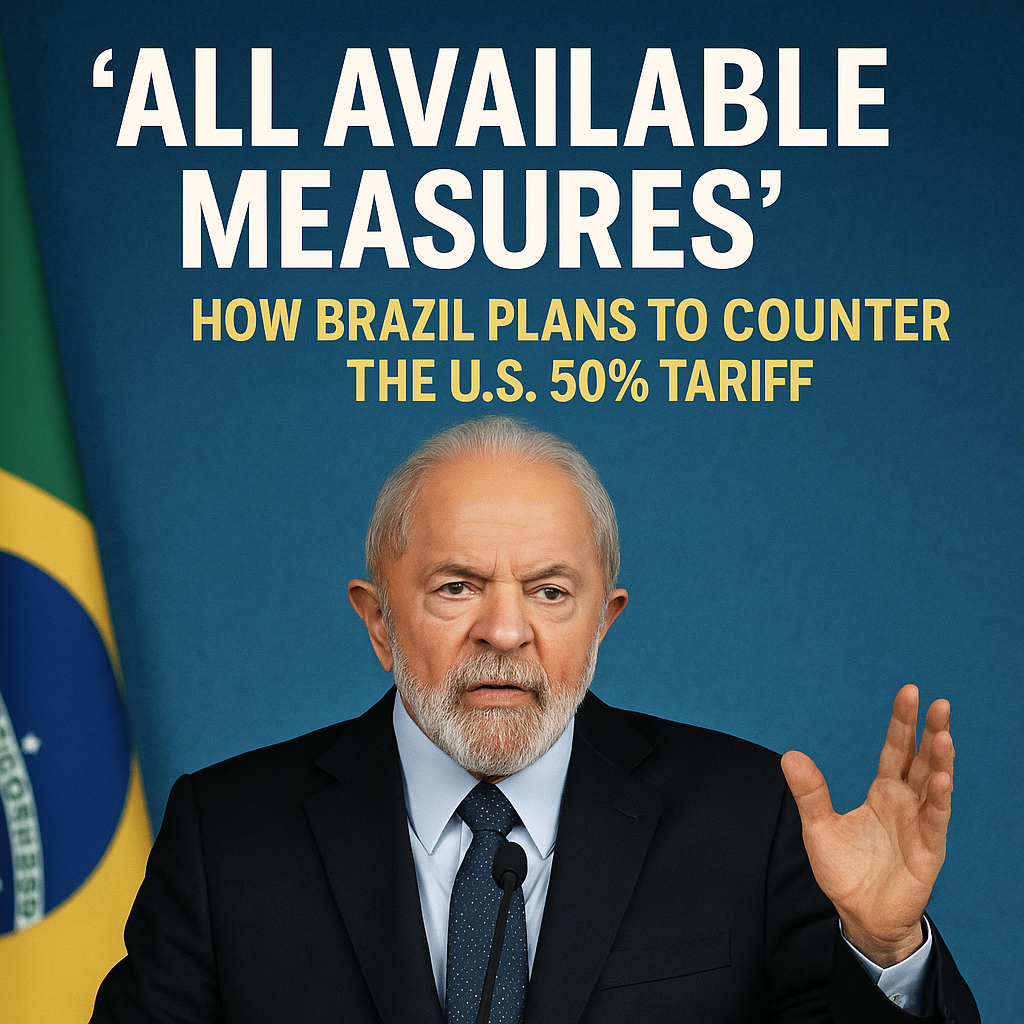‘All Available Measures’: How Brazil Plans to Counter the U.S. 50% Tariff
Brazil vows to defend its interests with “all available measures” after the U.S. imposes a 50% tariff. Explore Lula’s legal, diplomatic, and economic strategies.
Key Takeaways
A Presidential Promise of ‘All Available Measures’
On July 9, 2025, President Donald Trump announced a sweeping 50% tariff on all Brazilian imports. The decision shocked markets and raised alarms across Latin America.
President Luiz Inácio Lula da Silva issued a swift and sharp response. He vowed to use “all available measures” to protect Brazil’s economic interests. That phrase has since become the symbol of Brazil’s resistance in a brewing trade conflict.
This move signals more than retaliation—it marks a turning point in U.S.-Latin American trade dynamics.
From 10% Duties to a 50% Trade War
The conflict began on April 2, 2025, when the U.S. announced a 10% tariff on Brazilian goods.
After months of stalled talks, Washington raised the stakes with a 50% blanket tariff, effective August 1.
Brazil immediately filed a formal WTO complaint. Lula’s administration also proposed a “Trade Reciprocity Law” allowing Brazil to mirror any foreign tariff increases.
The escalation highlights a clear shift: Brazil is no longer playing defense.
Trade Exposure and Economic Resilience
In 2024, U.S.–Brazil trade reached $10 billion. The U.S. enjoyed a $7.4 billion surplus.
Despite the headline 50% rate, exemptions for aviation, mining, and sports equipment brought the effective rate down to about 30.8%.
Brazil sends 12% of its exports to the U.S. but 28% to China. This diversification buffers the impact.
Analysts estimate the tariffs will reduce GDP by less than 0.15 percentage points.
A Sovereign Trade Strategy
“We won’t beg. We’ll respond through the WTO,” said Lula, rejecting Trump’s call for direct talks.
The statement underscored Brazil’s commitment to international legal processes over personal diplomacy.
Economist Joseph Stiglitz called the approach “an act of trade sovereignty.”
Former Chilean ambassador Gerardo Muñoz described it as “active non-alignment,” a rising Global South strategy.
Sector Impact and Domestic Policy Response
Agriculture is the most exposed sector. Exporters of coffee, beef, sugar, and citrus are already seeing shipment delays and order cuts.
Regional economies in Brazil’s northeast and central-west are at higher risk.
To prevent inflation, Brazil’s central bank is holding its benchmark interest rate at 15%. The government is also drafting relief measures for affected workers and businesses.
WTO Litigation, BRICS Diplomacy, and a Diversified Future
WTO proceedings are underway, but rulings could take months—and enforcement is uncertain.
Meanwhile, Brazil is deepening trade ties with China and BRICS nations. A recent $10 billion bilateral trade agreement with China, settled in yuan, bypasses the U.S. dollar altogether.
Talks with African and Latin American partners are also expanding. Lula’s broader goal is to reshape Brazil’s trade map—and reduce exposure to unilateral U.S. actions.
A Defining Moment in Global Trade Realignment
President Lula’s use of the phrase “all available measures” was no empty promise.
Through legal action, economic diplomacy, and strategic realignment, Brazil is asserting its sovereignty in a global economy dominated by great-power competition.
This standoff may reshape not only U.S.-Brazil relations but also the structure of global trade in the years to come.







